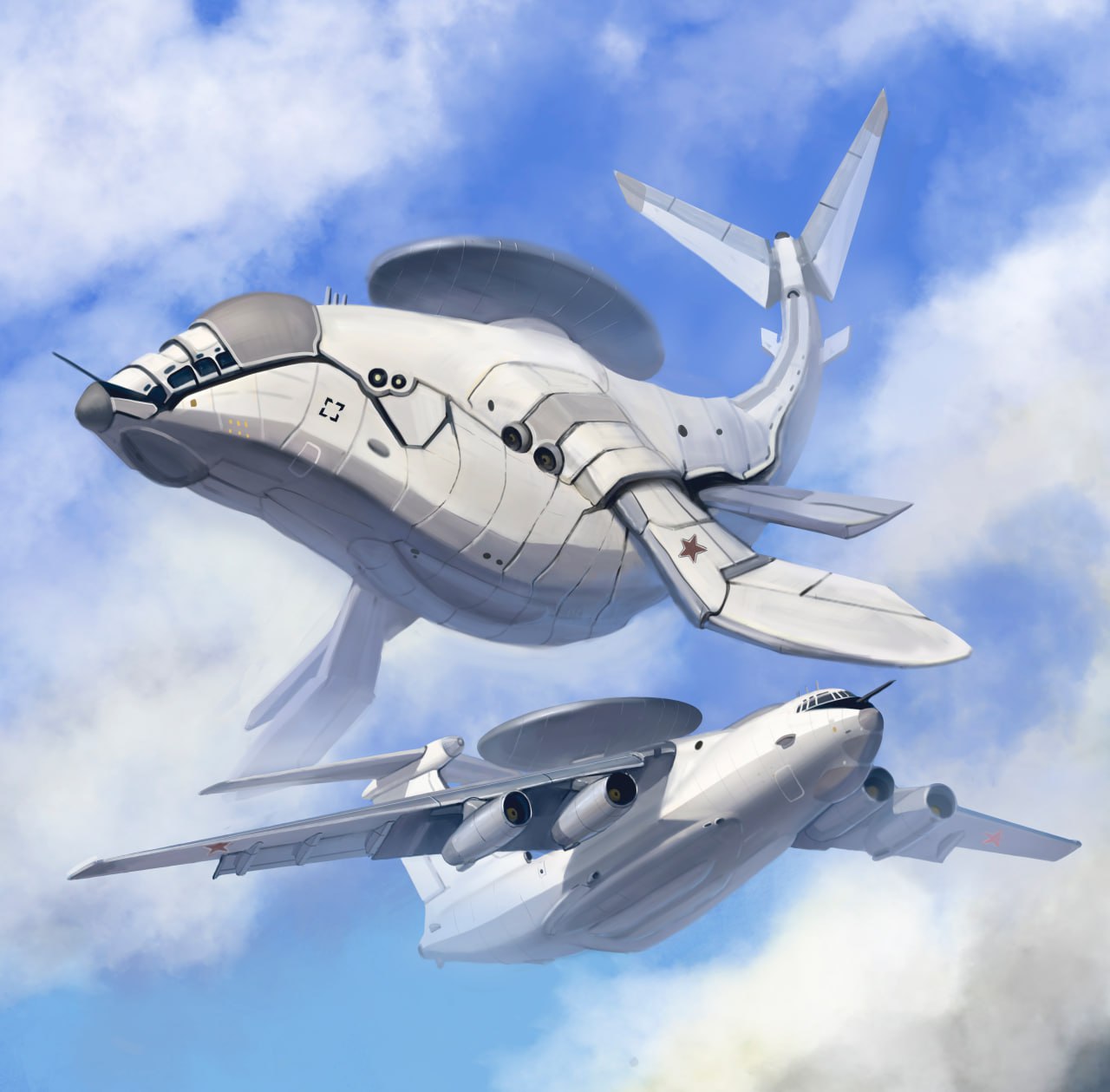Theories are swirling around how Ukrainian air defenses brought down the Russian A-50 Beriev AWACS aircraft by laying a carefully crafted trap. The shooting down of an A-50 radar aircraft based on Il-76, along with 15 people on board, is a big loss for the Russian Air Force, which is reported to have only nine of these aircraft in its fleet.
While speculations are rife about the air defense system being used to bring down the jumbo aircraft, the military watchers are also putting out theories to understand how it happened. A Russian Ilyushin Il-22 command plane was damaged in the same attack.
Some experts are suggesting that Ukrainians deployed one of their ‘Franken’ surface-to-air missiles, created through the mating of Patriot missiles with their S-300 systems, to achieve spectacular success.
Over 40 A50s were built in the 1980s and 1990s, but as of 2022, only about 16 remained, with nine to eleven of them being in flyable condition. Since late 2022, reports have indicated that only three of these aircraft are still “fully mission capable” (FMC), meaning that all its equipment are completely functioning. This is because they were used extensively in the early months of the Russian invasion of Ukraine.
The Ukrainian air force scored the kill over the Azov Sea, where less than a month earlier, the Patriot reportedly brought down three Su-34 ‘Fullback’ fighter bombers.
Tom Cooper, a defense research analyst, suggests that Ukrainian radar and missile crews set up a ruse to bait the Russian flying radar out. Tom has authored several books on Russian defense systems.
Applying his knowledge of the Russian systems, Cooper conjectured what transpired during and before the incident.
Ukrainian Ambush Of A-50
The prelude to the January 14th kill was laid on January 13, when Ukrainian Air Force jets, most likely Sukhoi Su-24 bombers, pounded Russian Air Force installations across the Russian-occupied Crimea Peninsula. “Several radars were knocked out,” Cooper claims.
The Russians ordered one of their A-50Us to get airborne. Considering the aircraft had “insufficient” equipment” for the task, an Il-22M airborne command post accompanied it. Also, because of the short radar range of the A-50U, it had to operate close to the frontline (as close as 80-90 kilometers from it) to detect incoming Ukrainian aircraft and missiles.
On January 13, following the Ukrainian air strikes, the A-50U and Il-22 M were ordered to fly closer to the frontline. “The two aircraft were escorted-probably by at least a pair of Su-30SM interceptors. Moreover, Su-34s were releasing Kh-59 stand-off precision-guided munitions at targets in Ukraine,” Cooper noted.
This flying activity helped Ukraine plan to lay down a trap for the Russian aircraft. “Ukrainian air strikes on the Russian air defense systems on the Crimean Peninsula on January 13 have forced the Russians to react the way Ukrainians could predict them to react: a day later, on January 14, they ‘pushed’ their A-50U closer to the frontline,” Cooper said. “When one is behaving predictably, one is easy to ambush – and to kill.”
On January 14, one Russian Su-34 reported that its electronic warfare systems recorded a radar emission of a Ukrainian S-300 (NATO moniker SA-10 Grumble), which was not known to be there earlier.
Ukrainians Teamed Patriots With S-300?
On January 14, Ukrainians “secretly” deployed a suitable SAM system to target the two Russian aircraft from long range; whether it was the S-300 SAM system or the Patriot PAC-2/3 system is unclear.
“It is also possible that Ukrainians have deployed a launcher and a radar (plus power-supply equipment) from one of their three PAC-2/3 SAM systems in ‘Assault Mode,’ in combination with one of their S-300 radar,” surmised Cooper.

The Ukrainians switched on the S-300 and made its location known to the Russian fighter jets. The S-300 radar detected suitable targets and provided “their azimuth and range” to the PAC-2/3 SAM system. The Patriot powered up its radar for only a few seconds: “long enough to obtain its targeting data, but too short for the Russians to dependably detect its emissions and assess them as a threat.”
After this, the Ukrainians fired their missiles. Immediately after hitting the target, the Ukrainian S-300 and PAC2/3 crews promptly ceased emitting and packed up their systems to avoid possible Russian retribution.
The A-50U Serial number RF-50601 was hit by the SAMs some 90-120 kilometers after take-off. The aircraft caught fire and crashed in the marshes south of Preslav. The missile aiming for the Il-22M proximity fused near its target, peppering it with shrapnel.
According to reports in Russian social media, at least two crew members were killed, and two others were wounded (one of them is still in critical condition). But, the crew managed to fly the badly damaged aircraft back to the Anapa airport and landed it safely.
The Russian Air Force is left with only two A-50Us, while four others need upgrades or overhauls. Russia is unlikely to risk its last two A-50s to provide radar coverage over the entire Crimea.
- Ritu Sharma has been a journalist for over a decade, writing on defense, foreign affairs, and nuclear technology.
- She can be reached at ritu.sharma (at) mail.com
- Follow EurAsian Times on Google News